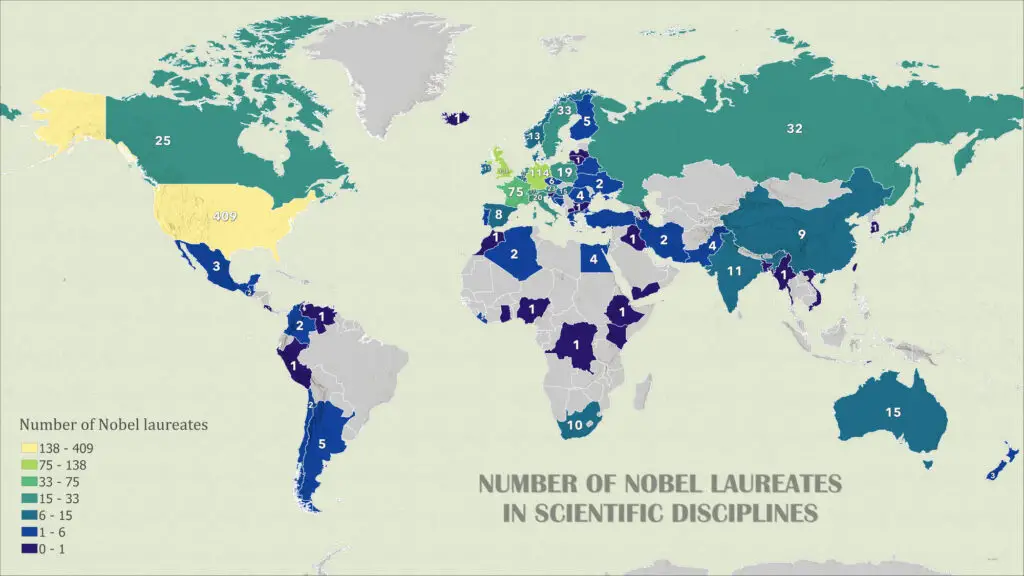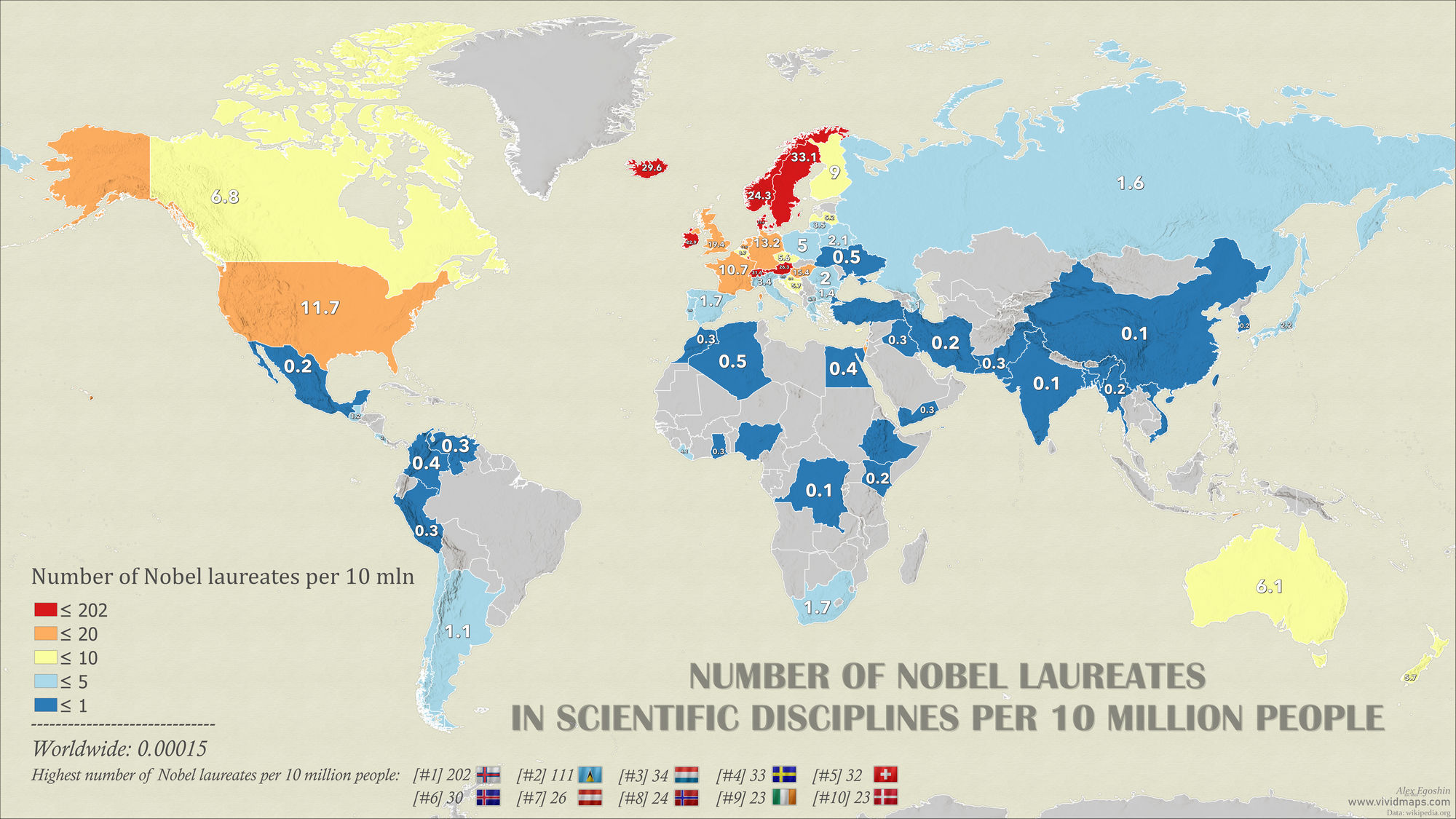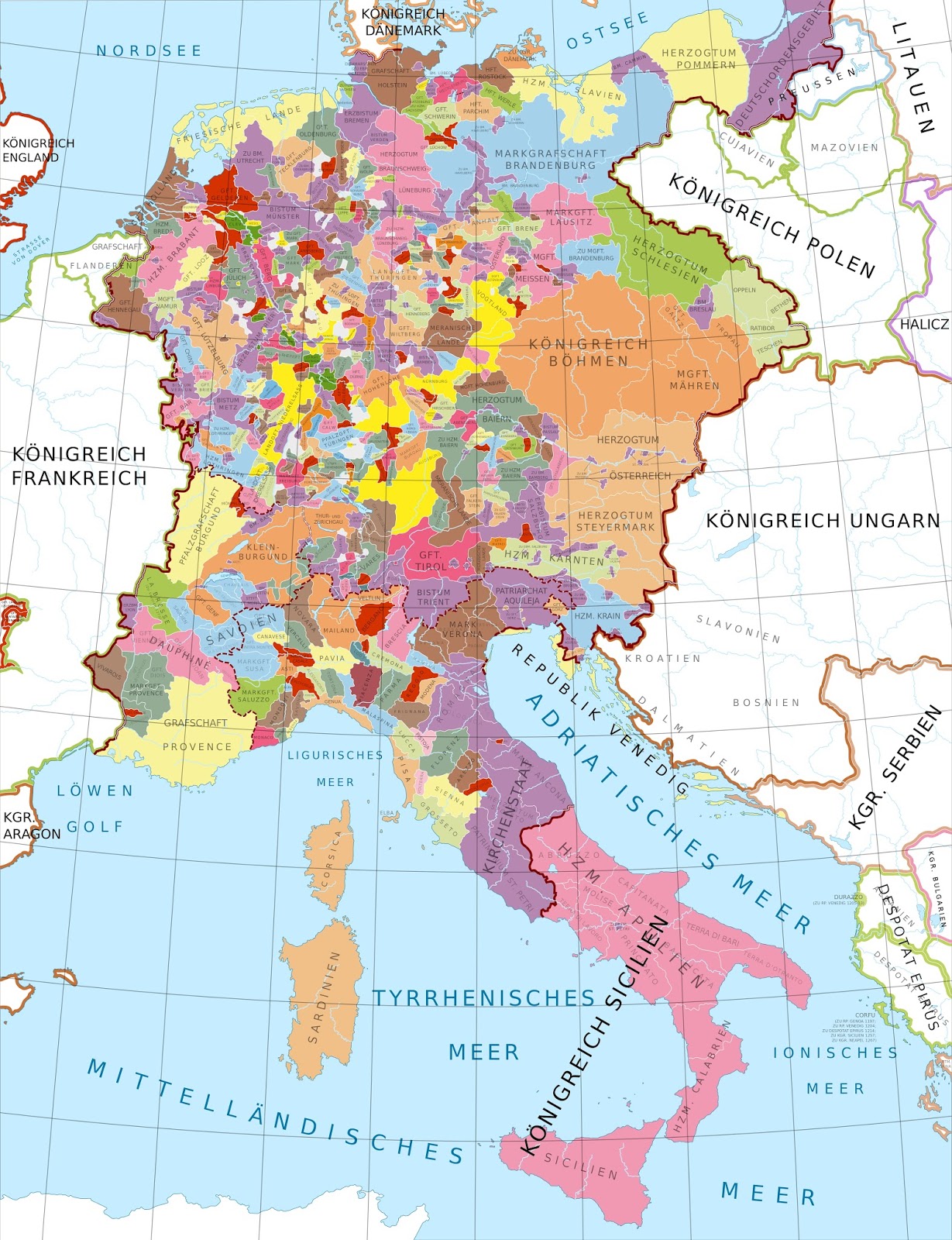The Global Landscape of Nobel Laureates: A World Map Perspective
The Nobel Prize is one of the most prestigious awards globally, celebrating exceptional contributions to humanity across various fields. Established by Alfred Nobel in 1895, the prize recognizes achievements in Peace, Literature, Chemistry, Physics, Medicine, and Economic Sciences. Committees, such as the Royal Swedish Academy of Sciences and the Norwegian Nobel Committee, select laureates based on stringent criteria, including the originality and impact of their work.
This article delves into the global distribution of Nobel laureates, using a world map to illustrate the total number of winners by country. This visual representation offers an insightful perspective on where the greatest minds have emerged and how different nations contribute to the global landscape of excellence.
When we examine the world map of Nobel laureates, certain countries stand out for their significant contributions. The United States leads with the highest number of Nobel Prize winners, a testament to its strong emphasis on innovation, research, and education. Following closely are the United Kingdom, Germany, and France, each with a rich history of scientific and literary achievements.

The world map poster also reveals interesting patterns and clusters of laureates. In Europe, nations like Sweden, Switzerland, and the Netherlands have produced a high number of laureates relative to their size. This concentration can be attributed to robust educational systems, supportive research environments, and a cultural appreciation for scientific inquiry and literary excellence.
Asia presents a diverse picture on the world map, with Japan being a prominent contributor, especially in the fields of Physics and Chemistry. Other countries like China and India are also rising in their contributions, reflecting their growing investments in education and research.
The map also highlights the contributions from smaller nations. For instance, Israel, with its relatively small population, has an impressive number of Nobel laureates, particularly in Chemistry and Economics. Similarly, countries in Scandinavia, such as Denmark and Norway, show a high number of laureates per capita, emphasizing the region’s strong tradition of academic and scientific excellence.
In Latin America, countries like Argentina and Mexico stand out on the world map, having produced notable Nobel laureates in Peace and Literature. These contributions highlight the region’s rich cultural heritage and its ongoing efforts to address social and political issues.
Africa’s contributions, though fewer in number, are significant. South Africa, for example, has produced Nobel laureates in Peace and Literature, underscoring its role in the global dialogue on human rights and social justice.
The world map of Nobel laureates is a powerful tool for understanding global patterns of excellence. It not only highlights the countries with the highest total number of laureates but also provides insights into the cultural, educational, and societal factors that contribute to these achievements. By examining this map, we gain a deeper appreciation for the diverse and widespread nature of human ingenuity and the universal quest for knowledge and betterment.
For those interested in exploring the fascinating world of Nobel laureates, this world map serves as an excellent starting point. It offers a comprehensive overview of where and how these extraordinary individuals have made their mark on history, inspiring future generations to pursue greatness.
Interested in learning more about Nobel laureates? Check out these insightful books available on Amazon.








